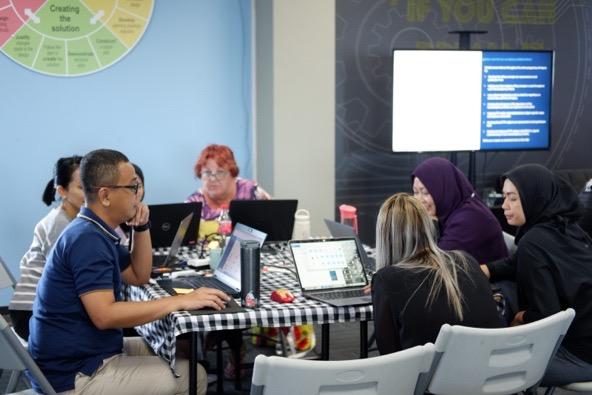
1 minute read
PYP Parents Programme
A community of entrepreneurial and compassionate learners
As we continue with our preparations for the upcoming IB Evaluation, we reflect on the successes and the challenges we face as a school community, and continually seek better ways of identifying and working towards our goals.


In January, we focused on our inclusion and differentiated instruction practices, and would like to share some insight into those concepts with you.
At ACG School Jakarta, we embrace and celebrate diversity. Our staff and student body comprises 33 different nationalities and our community members speak a variety of languages. It is not only in nationalities and languages that our community is diverse. We recognize and strive to serve learners with different learning styles and perspectives. As our language of instruction is English, we have an English Language Support program for students who need it.
We seek to ‘provide meaningful ways to develop friendships and make connections between students:

• from different cultures, nationalities and social backgrounds
• with different learning styles and perspectives.’ through the many sports and other activities our students participate in (“International Mindedness”, PYP: From Principles into Practice, 2018)
IB Perspective on learning diversity and inclusion

In all IB programmes, teaching is … designed to remove barriers to learning. Teaching is inclusive and values diversity. It affirms students’ identities, and aims to create learning opportunities that enable every student to develop and pursue appropriate personal goals. What is inclusion?
Inclusion is an ongoing process that aims to increase access and engagement in learning for all students by identifying and removing barriers.
Inclusion is an organizational paradigm that involves change. It is a continual process of increasing learning and participation for all students. It addresses learning support requirements and questions the broader objectives of education, the nature of pedagogy, curriculum and assessment. It is an educational approach to which all schools should aspire.
Inclusion is facilitated in a culture of collaboration, mutual respect, support and problemsolving involving the whole school community.
(Learning diversity and inclusion in IB programmes, 2020)
Science in Year 7 is learning how to neutralize the acid and base with titration. While in Year 8, investigate the average sound speed and test the presence of starch in mystery cookies.



Science in Year 10 Investigates the enzyme function in digestion. While in Year 11,present their research about greenhouse gases. Year 12 investigates the refraction and reflection of light rays. Year 13 identifies the structure and function of the heart by dissecting the lamb’s heart.










